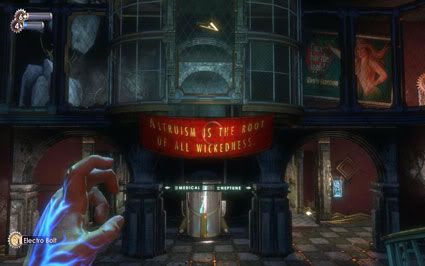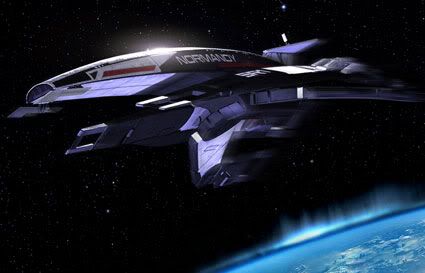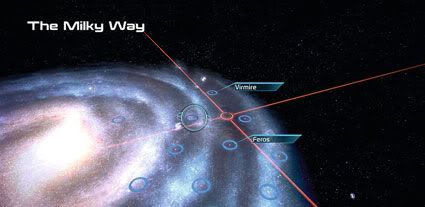Jaysus Begorrah, there are a lot of Mass Effect 2 reviews out there. I suppose sooner or later I’ll post one of my own, once I’m able to play the damn thing, but going with my revamped “one at a time” policy, I need to finish Dragon Age and BioShock 2 first. Which hopefully means I’ll be able to get past the final final Archdemon boss despite having been a bit helter-skelter in my Arcane Warrior build. But I digress. We’re not here to talk about fantasies today, at least not the ones in a specific Tolkienesque setting – we’re here to get our space exploration on.

If you’ve played Mass Effect 2, you probably no longer look upon this vehicle with the usual quantity of rage reserved for its sections in the first game. I almost want to review the Mako as if it were a car on Top Gear:
The Mako has a fantastic range of armaments, able to turn a regiment of the Queen’s own armored warriors into a fine red mist in a matter of seconds. But if you actually want to close distance with your intended target, you’re in for a shock. Normally when driving an APC, you can expect a stiff, metal-cast suspension built to handle abuse. But the Mako’s suspension is apparently made from poured concrete, meaning it has a turning radius greater than some of the planets you’re about to explore.
The Mako’s not an entire loss, but it’s not exactly a joy to drive, either. However, BioWare seems to think that the Mako was an entire loss, and so gave us something new in Mass Effect 2.

I still haven’t played the game myself, but having seen this part of it, I can see why it is one of the most universally loathed aspects of not just this game, but any game produced in recent memory. Some of the complaints about the Mako sections of the first game were their length and tedium. Scanning in the sequel takes just as long and, from what I understand, is just as tedious. Another Mako complaint is, obviously, it’s handling. So if scanning is meant to be an improvement over the Mako, the controls should handle smoothly and be a delightful diversion from ducking for cover like we’re playing Gears of War, right? Sorry, that’s not the case here. The reticle moves slowly over the surface of a world when you’re scanning, and unless you want to risk missing a particularly rich pocket of Element Zero, you need to drag it across every square mile of the planet’s surface.
Now one thing the scanning mini-game does well is convey the feeling that one is in space. And I don’t mean it hearkens to Star Trek or Battlestar Galactica. No, it hearkens more to 2001: A Space Odyssey or video recordings of NASA operations. That is to say that it’s lengthy, quiet, procedural and really rather dull. When I sit down to play this game, I’m going to have my iPod handy, and once the Normandy establishes orbit around an unexplored world, I’m going to turn on some music that’ll keep me awake while I’m scanning.
Something like this, for example.








